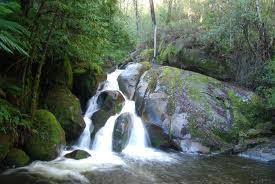 Companies everywhere extol their sustainable development programs and goals. Sustainability drives UN programs like Agenda 21, EU and US green energy initiatives, and myriad manufacturing, agricultural, forestry and other efforts. But what is sustainability? What is – or isn’t – sustainable?
Companies everywhere extol their sustainable development programs and goals. Sustainability drives UN programs like Agenda 21, EU and US green energy initiatives, and myriad manufacturing, agricultural, forestry and other efforts. But what is sustainability? What is – or isn’t – sustainable?
Obama presidential science advisor John Holdren has said we cannot talk about sustainability without talking about politics, power and control. That troubling reality is at the core of growing debates about Washington, DC central power versus state federalism, individual rights and liberties, United Nations and European Union attempts to make decisions for sovereign nations, and the growing power and influence of activist nongovernmental organizations on energy, environmental, economic and other matters.
Because those who define the terms of debate increasingly determine public policies, they also determine who is to be master: those who must live with the consequences of their personal choices, or unaccountable mandarins who impose policies, regulations, decisions and consequences on others.
Putting that vital discussion aside for another day, one can discern three kinds of sustainability.
The public relations variety promotes corporate images and inspires flattering ads and press releases, but is largely devoid of real substance. A favorite example is a consulting company’s annual sustainability report, which boasted of having reduced the number of – paper cuts among employees.
Real sustainability seeks constantly improving technologies and practices: conserve energy, be more efficient, cut costs, to keep companies profitable and employees employed; tune up cars, keep tires inflated, and improve traffic light sequencing, to move traffic along, increase gas mileage and reduce pollution; use high yield farming to get the most crops per acre, reduce water use and improve nutrition.
This is tikun olam (repair of the world); the precept that you are not obligated to complete the task, but neither are you free to abandon it; the Boy Scout prescription that we must leave our world better than we found it; the Judeo-Christian principle of stewardship of creation: or Robert Kennedy’s declaration: I dream things that never were and say, Why not?
No one predicted, certainly not years in advance, that the Hearthstone House in Appleton, Wisconsin would suddenly be lit with hydroelectric power, or that electricity would safeguard and enhance our lives and economy in the numerous ways it does today. No one foresaw widespread natural gas use for electricity generation and home heating, ubiquitous laptop computers, flash drives, fiber optic cables replacing copper, or little mobile phones with far more power than a 1990 desktop computer.
Today, the pace of technological change has become mind-numbing. And yet, under sustainability dogma, we are supposed to predict future technologies – and ensure that today’s development activities will somehow not compromise those technologies’ unpredictable energy and raw material requirements.
Sustainability dogma also demands that we base policy decisions on knowing how many years energy, metal or other resource deposits will last, and to determine whether developing and using them will be sustainable. But what if new technologies let us find and develop new deposits, or make existing deposits last decades or centuries longer: 3-D and HD seismic, deepwater drilling and production, instant metallic mineral analysis gear in a backpack, or horizontal drilling and hydraulic fracturing, for instance? How long must those expanded reserves last, before using them won’t be sustainable? And who decides?
How can politicians, regulators and environmental activists decree that oil and gas are not sustainable – even as seismic, fracking, drilling and other technologies unlock a century of new deposits? And then insist that corn ethanol is sustainable, even though this year’s US ethanol quota requires 40% of our corn crop, on an area the size of Iowa, billions of gallons of water, huge quantities of hydrocarbon-based pesticides, fertilizers and tractor fuel, vast amounts of natural gas to run the distilleries, and perpetual subsidies … to produce a fuel that drives up food prices and gets one-third less mileage per gallon than gasoline?
How can they decree that wind energy is sustainable, despite killing millions of birds and bats every year?
How is it sustainable, ethical or “environmental justice” for the United States to use so many of the world’s oil, gas, rare earth, platinum, gold and other resources – because we refuse to allow exploration and development of our own vast energy, metallic and other deposits right here in the United States?
How is it ethical to safeguard the needs of future generations, even if it means ignoring or compromising the needs of current generations – including the needs, aspirations, health and welfare of the most impoverished, energy-deprived, malnourished, politically powerless people on Earth? How much longer must 700 million Africans, 400 million Indians and another 300 million people in other countries continue to live without electricity and all its countless blessings, because eco-activists obsess about global warming, insist on wind and solar, and oppose coal, gas, nuclear and hydroelectric power plants?
How long must billions of people remain destitute, diseased and malnourished, because environmental activists and UN bureaucrats don’t like economic development, insecticides or biotechnology, either?
Does anyone suppose human ingenuity, creativity and innovation (what Julian Simon called our ultimate resource) will suddenly stop functioning? Assuming there is no government restriction on or confiscation of our God-given rights to innovate, create, invest and build – will human beings ever stop doing so?
The fundamental problem with UN/activist/EPA “sustainability” is that it is infinitely elastic and malleable. No one can really know what it means, and it’s the perfect weapon in the hands of anti-hydrocarbon, anti-development activists. Whatever they support is sustainable. Whatever they oppose is unsustainable.
To the extent that their agendas foster “social justice” and “poverty eradication,” they will do so only in the context of climate protection, biodiversity, green growth, renewable energy, and an end to “unsustainable patterns of consumption and production” – as defined, evaluated and implemented by UN or EPA-approved scientists, regulators and activists, assisted largely by assumption-laden, agenda-driven computer models.
Worst of all, this UN/activist/EPA version of sustainable development gives unelected regulators increasing control over energy use, economic growth, wealth redistribution, and people’s lives, living standards, health and well-being. And they acquire control without the essential safeguards, checks and balances of robust science, independent courts, democracy, transparency, honesty and accountability.
We should strive to conserve energy, water and other resources, when it makes economic, technological, ecological and ethical sense to do so. We should reduce air and water pollutants that actually endanger human health and welfare. But we cannot afford to let “sustainable development” become yet another justification for ceding still more power to unelected, non-transparent, unaccountable overseers.
Email this author
- The Most Progressive Budget in Virginia’s History - December 21, 2019
- When is a Clean Water Act Permit Needed? - December 21, 2019
- Should U.S. Consider Modern Monetary Theory to Improve Economy? - December 21, 2019
